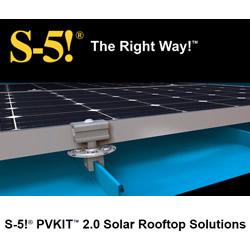Navy, DoD, Developer Announce Wind Farm Agreement to Preserve Training Mission in South Texas
By Kenneth Hess, Chief of Naval Operations Energy and Environmental Readiness Division Public Affairs
NAVAL AIR STATION (NAS) KINGSVILLE, Texas (NNS) – Today, officials from the Department of Defense (DoD), the Department of the Navy (Navy), E.ON Climate & Renewables North America, LLC (ECRNA), and Petronila Wind Farm, LLC, owned by ECRNA (Petronila Wind), announced a memorandum of agreement (MOA) to allow the developer to build and operate new wind turbines in Nueces County, Texas while working to protect the Navy's ability to continue its training mission at NAS Kingsville and NAS Corpus Christi. Representatives from each organization participated in a ceremony and base tour to commemorate the agreement.
Signatories to the agreement include John Conger, Acting Deputy Under Secretary of Defense for Installations and Environment; Joseph Ludovici, Principal Deputy (Acting) Assistant Secretary of the Navy for Energy, Installations and Environment; John Quinn, Deputy Director, Chief of Naval Operations Energy and Environmental Readiness Division; VADM William French, Commander, Navy Installations Command; Rear Adm. Jack Scorby, Commander, Navy Region Southeast; Capt. David Edgecomb, Commanding Officer, NAS Corpus Christi; Capt. Mark McLaughlin, Commanding Officer, NAS Kingsville; Paul Bowman, Vice President of Petronila Wind; and Steve Trenholm, Chief Executive Officer, ECRNA.
Under the MOA, ECRNA will install and operate up to 100 wind turbines at the Petronila Wind Farm site.
"The Navy is at the forefront of alternative energy use and production, and the Navy supports such projects when they are compatible with our mission," said Rear Adm. Scorby. "The agreement will enable this wind turbine project to move forward while putting measures in place that work to preserve vital pilot training capability at NAS Kingsville and NAS Corpus Christi."
Under the agreement, ECRNA will provide $750,000 in funding to DoD for researching, testing and implementing solutions to mitigate potential impacts. Mitigation efforts could include upgrades that allow the Navy radars to more accurately detect aircraft; optimizing radars to "ignore" signals received from wind turbines, incorporating new systems that fill in radar gaps, and other technical modifications. To reduce the potential of radar interference, the new turbines will be limited to 500 feet in height and will be confined to one 5 by 7 mile site within the existing Petronila Wind Farm project boundary.
The agreement establishes a specific set of procedures the Navy and ECRNA will use to safely curtail wind turbines when and if needed, and to document and address emerging concerns. In addition, Navy, DoD, and Petronilla Wind will form a joint working group to study the effectiveness of the mitigation measures implemented
"This agreement is a collaborative effort that proves the military and the wind industry can find solutions that protect bases and still allow responsible development," said Steve Trenholm, CEO, ECRNA.
The Navy and the Department of Defense will continue working closely with renewable energy developers and local communities in South Texas to ensure local wind turbine projects can coexist with the Navy mission.
For additional information about the MOA signing, please contact
Kenneth Hess at 703-695-5077 or by email at kenneth.hess@navy.mil, or
Jon Gagn�, NAS Kingsville Public Affairs, at 361-516-6500 or by email at jon.gagne@navy.mil.
To learn more about the Navy's energy, environment, and climate change initiatives, visit http://www.greenfleet.dodlive.mil
Featured Product

